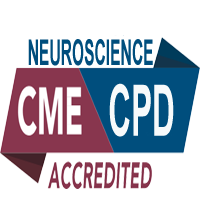
Andrzej Kiejna
Wroclaw Medical University, Poland
Title: Dual Diagnos- mental disorders associated with addiction (ICD-10 or DSM-5)
Biography
Biography: Andrzej Kiejna
Abstract
According to the definition of dual diagnosis mental disorders associated with addiction should meet the ICD-10 or DSM-5.Literature data indicate that about 30-50% addicted to alcohol or other drugs have severe mental disorder, which is twice higher rate than the population do not use psychoactive substances. Similarly, among the major mental disorder, approximately 30% used alcohol and suffering from disorders associated with it. In Poland in the years 2010-11was carried out study of the prevalence of mental disorders in the general population in adults, according to the methodology of the World Mental Health Survey Initiative. Among the most common lifetime (LT) diagnostic categories were diagnosed with alcohol abuse, males 18.6% and females 3.3% and addiction respectively 4.1% and 0.4%. In contrast, substance addiction, 1.8% in men and 0.8% among women. Currently, we conduct a detailed analysis of the link between substance addiction and the presence of other diagnostic categories. On the other hand, when analyzing data from the Statistical Yearbook of the Institute of Psychiatry and Neurology in Warsaw we will notice a significant increase in admissions to stationary psychiatric institutions patients with dual diagnosis in the years 1997 - 2005 from the 3.2% to 7.6% in relation to all admission. However, this indicator stabilized in subsequent years, despite the relatively high percentage of addicts. In 2010, the largest group consisted of patients with a diagnostic category F20-29, while relatively infrequent comorbidity of anxiety and affective disorders.

